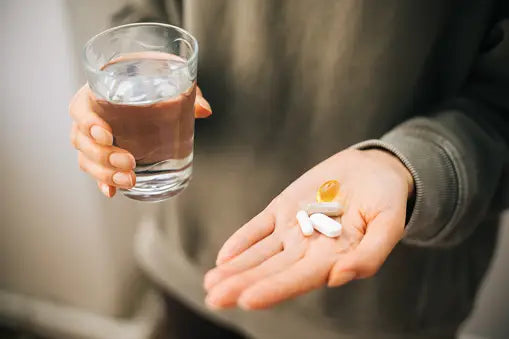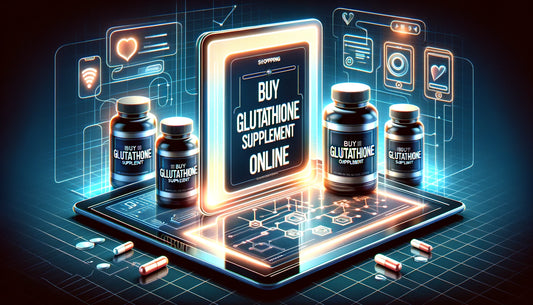

3 Best Ingredients to Get Leaner While Maintaining Muscle
Table of Contents
3 Best Ingredients to Get Leaner While Maintaining Muscle
by: Robbie Durand
It is not uncommon for bodybuilders to lose muscle and they are getting ready for a competition. The general endocrine response to a low-calorie diet is increased hunger, reduced metabolic rate, and loss of lean muscle mass. No matter how much protein a bodybuilder consumes, it’s nearly impossible to keep all the muscle while dieting to get ripped up. Severe calorie restricted diet is often associated with a reduced thermogenic response. It makes sense that the body sense a reduction in calories will send a negative feedback loop to your brain to slow down metabolic rate to compensate for the loss of calories. The decrease in thermogenic response is due to some hormones such as thyroid, insulin, testosterone, and leptin. The hormones of the thyroid gland, particularly triiodothyronine (T3), are known to play an important and direct role in regulating metabolic rate. Increases in circulating thyroid hormones are associated with an increase in the metabolic rate, whereas lowered thyroid levels result in decreased thermogenesis and overall metabolic rate. Some studies have reported that caloric restriction results in a reduction in thyroid function.
Calorie Restriction Reduces Muscle Thyroid Levels
Weight loss results in a loss of metabolically active tissue and, therefore, decreased basal metabolic rate. The newest research has found that not only does metabolic rate decrease, but muscle thyroid declines as well. That’s right, not only does your basal thyroid levels drop, but your muscle’s thyroid levels fall as well. Researchers examined muscle genes responses during and after caloric restriction. Using a rat model of semistarvation-refeeding, in brief, rats were food-restricted at 50% of their spontaneous food intake for two weeks (semi-starved rats), after which they were refed the amount of food corresponding to the spontaneous food intake of control rats matched for weight at the onset of refeeding. The researchers measure the animals muscle size and performance under both conditions of calorie restriction and refeeding. The researchers also measured the muscle thyroid levels by taking muscle biopsies. At the end of the study, researchers found that the muscle fibers of the rats placed on a low-calorie diet were altered from a fast twitch, explosive muscle fibers (i.e. more energetically costly) to a more fuel efficient slow twitch muscle fiber while dieting. The researchers speculated that the changes in muscle fiber types from a fast-twitch to a slow twitch muscle fiber resulted from the reduced calories and a need to make the muscle more fuel efficient. There is evidence that slow-twitch muscles use less ATP than fast-twitch muscles. The researchers found the calorie restricted diet resulted in a decrease in metabolic rate in conjunction with decreased availability of muscular thyroid T3 levels. The altered thyroid hormone metabolism, fiber type composition, and contractile properties constitute mechanisms by which diminished skeletal muscle thermogenesis could contribute to energy conservation during weight loss.
 The altered muscle function was likely induced by changes in thyroid hormone levels. This is strongly suggested by diminished T3 availability within skeletal muscle. In sum, the researchers concluded that diminished muscle thermogenesis following caloric restriction results from reduced muscle T3 levels, alteration in muscle-specific transcription factors, and fast-to-slow fiber shift. These energy-sparing effects persist during weight recovery and contribute to catch-up fat. This study reports that calorie restriction results in a reduced muscle thyroid levels that led to a shift in fiber types from the fast twitch muscle hypertrophy prone fibers to slow twitch aerobic muscle fibers. With the suppression of metabolism after low-calorie diets, competitors need to find ways to increase their metabolic rate. The three supplements which have the most research on increasing metabolic rate is caffeine, green tea extract, and synephrine.
The altered muscle function was likely induced by changes in thyroid hormone levels. This is strongly suggested by diminished T3 availability within skeletal muscle. In sum, the researchers concluded that diminished muscle thermogenesis following caloric restriction results from reduced muscle T3 levels, alteration in muscle-specific transcription factors, and fast-to-slow fiber shift. These energy-sparing effects persist during weight recovery and contribute to catch-up fat. This study reports that calorie restriction results in a reduced muscle thyroid levels that led to a shift in fiber types from the fast twitch muscle hypertrophy prone fibers to slow twitch aerobic muscle fibers. With the suppression of metabolism after low-calorie diets, competitors need to find ways to increase their metabolic rate. The three supplements which have the most research on increasing metabolic rate is caffeine, green tea extract, and synephrine.
Synephrine Science
With the gap that ephedrine left in the weight loss market years ago, Synephrine HCL has taken up ephedrine’s space as a popular weight loss supplement after ephedrine was named a banned substance in the United States. Synephrine has many of the same benefits as ephedrine, but without the addictive properties and negative side effects. Synephrine is a compound found in high concentrations in the fruit Citrus Aurantium (aka bitter orange), which is the only source strong enough to cause the fat-burning and stimulatory effects. It exists in many citrus fruits, but at levels, that would not have any impact on humans. Synephrine is also known to increase the body’s metabolic rate. It helps release the stored lipid cells into the bloodstream, and the metabolism, which is working at a faster rate than usual so it can burn off this stored energy. This creates a loss of fat in the body. It also has the benefit of being able to do so without majorly increasing blood pressure or heart rate. Similar to caffeine, synephrine is a stimulant. It provides an energy boost, can help suppress your appetite, and help you burn more calories even when exercise is not being undertaken. Many who take synephrine combined with caffeine find this gives them the results they are after.
 Synephrine is structurally similar to adrenaline, noradrenaline, and ephedrine; several studies have confirmed the metabolic effects of synephrine that are useful for bodybuilders such as enhancing thermogenesis and fat burning, increasing energy metabolism, and improving athletic performance. Synephrine is widely used in combination with caffeine and other ingredients in products designed to support weight management. A previous study reported that 20mg of synephrine with 325 mg of caffeine increased energy expenditure in humans. Previous research has shown beneficial effects of synephrine on raising metabolic rate. Synephrine is a phenylethylamine derivative with some structural similarities to ephedrine; however a recent review of the literature concluded that synephrine and bitter orange extract based on the available studies in animals, humans, and cell culture systems, it has been found that when taken orally and in recommended amounts both are safe. None of the previous research reviews have reported serious or significant adverse events that are directly related to bitter orange extract or synephrine. A typical sweet orange contains about 6mg synephrine. A wide variety of Citrus juices contain approximately 5mg synephrine per 8-ounce glass. Another positive aspect of using synephrine was that in a study in rats, synephrine dose-dependently decreased appetite in rats, which can help bodybuilders curve, their appetite while dieting. Most sports supplements and fat-burners/weight loss aids will take care of the stacking aspect for the end user. Caffeine’s effects are synergistic with it and will nearly always be found alongside synephrine, whether in pure anhydrous form or from an alternative source such as green tea extract. If you are looking to maximize the effects of synephrine, it should be combined with caffeine and green tea extract.Green Tea Extract, Caffeine, and Synephrine and High-Intensity Exercise: Ultimate Thermogenic Stack
Synephrine is structurally similar to adrenaline, noradrenaline, and ephedrine; several studies have confirmed the metabolic effects of synephrine that are useful for bodybuilders such as enhancing thermogenesis and fat burning, increasing energy metabolism, and improving athletic performance. Synephrine is widely used in combination with caffeine and other ingredients in products designed to support weight management. A previous study reported that 20mg of synephrine with 325 mg of caffeine increased energy expenditure in humans. Previous research has shown beneficial effects of synephrine on raising metabolic rate. Synephrine is a phenylethylamine derivative with some structural similarities to ephedrine; however a recent review of the literature concluded that synephrine and bitter orange extract based on the available studies in animals, humans, and cell culture systems, it has been found that when taken orally and in recommended amounts both are safe. None of the previous research reviews have reported serious or significant adverse events that are directly related to bitter orange extract or synephrine. A typical sweet orange contains about 6mg synephrine. A wide variety of Citrus juices contain approximately 5mg synephrine per 8-ounce glass. Another positive aspect of using synephrine was that in a study in rats, synephrine dose-dependently decreased appetite in rats, which can help bodybuilders curve, their appetite while dieting. Most sports supplements and fat-burners/weight loss aids will take care of the stacking aspect for the end user. Caffeine’s effects are synergistic with it and will nearly always be found alongside synephrine, whether in pure anhydrous form or from an alternative source such as green tea extract. If you are looking to maximize the effects of synephrine, it should be combined with caffeine and green tea extract.Green Tea Extract, Caffeine, and Synephrine and High-Intensity Exercise: Ultimate Thermogenic Stack
Thermogenesis is the process of heat production in living organisms that can facilitate the fat burning process. There are many ingredients in most over the counter fat burners. Of these bioactive compounds, caffeine, synephrine and green tea catechins of various plant extracts remain arguably as the main ingredients found in thermogenic supplements today. In the prestigious Journal of Strength and Conditioning Research reported in the study titled, “Dietary Caffeine And Polyphenol Supplementation Enhances Overall Metabolic Rate And Lipid Oxidation At Rest And After A Bout Of Sprint Interval Exercise” reported that caffeine and green tea extract increased post-exercise fat oxidation after sprint exercise by 10%. When green tea extract and caffeine are combined, they operate synergistically to enhance metabolism, fat oxidation, and ultimately facilitate weight loss. Previous research has found that a combined treatment of a catechin polyphenol-caffeine mixture has shown to induce a significantly greater thermogenic response than an equivalent amount of caffeine. At the end of the study, during the resting state, a single dosing of green tea extract and caffeine induced an approximate 8% rise in energy expenditure with an increase in oxygen uptake. Accompanying this thermogenic response was a 10% increase in fat oxidation rate. Specifically, post-sprint exercise energy expenditure was approximately 10% greater with pre-exercise caffeine-polyphenol supplementation versus placebo. The results suggest that increased lipid oxidation rate following sprint interval exercise is further amplified with a single caffeine-polyphenol dosing. This is a great study showing the synergistic effect of combining caffeine and green tea extract with high intensity exercise can enhance fat oxidation.
If you are looking for a great fat burner backed by research, you may want to consider Infinite Lab’s Elevate Series Final Cutz, which contains caffeine, green tea extract, and synephrine. It’s one of the few supplements to increase thermogenesis and keep metabolic rate going while on a calorie restricted diet.
Jo et al. “Dietary Caffeine And Polyphenol Supplementation Enhances Overall Metabolic Rate And Lipid Oxidation At Rest And After A Bout Of Sprint Interval Exercise.” Journal of Strength & Conditioning Research: Post Acceptance: November 23, 2015.
Dulloo AG, Duret C, Rohrer D et al. Efficacy of a green tea extract rich in catechin polyphenols and caffeine in increasing 24-h energy expenditure and fat oxidation in humans. Am J Clin Nutr. 1999;70(6):1040-5.
Gahreman D, Wang R, Boutcher Y, Boutcher S. Green Tea, Intermittent Sprinting Exercise, and Fat Oxidation. Nutrients. 2015 Jul 13;7(7):5646-5663.
Tsai AG, Williamson DF, Glick HA. Direct medical cost of overweight and obesity in the USA: a quantitative systematic review. Obesity reviews : an official journal of the International Association for the Study of Obesity. 2011;12:50–61.
Goran MI, Alderete TL. Targeting adipose tissue inflammation to treat the underlying basis of the metabolic complications of obesity. Nestle Nutrition Institute workshop series. 2012;73:49–60. discussion p1-6.
Kalupahana NS, Claycombe KJ, Moustaid-Moussa N. (n-3) Fatty acids alleviate adipose tissue inflammation and insulin resistance: mechanistic insights. Advances in nutrition. 2011;2:304–316.
Basu A, Lucas EA. Mechanisms and effects of green tea on cardiovascular health. Nutrition reviews. 2007;65:361–375.
Chen Z, Zhu QY, Tsang D, Huang Y. Degradation of green tea catechins in tea drinks. Journal of agricultural and food chemistry. 2001;49:477–482.
Chan CY, Wei L, Castro-Munozledo F, Koo WL. (−)-Epigallocatechin-3-gallate blocks 3T3-L1 adipose conversion by inhibition of cell proliferation and suppression of adipose phenotype expression. Life sciences. 2011;89:779–785.
Hung PF, Wu BT, Chen HC, Chen YH, Chen CL, Wu MH, et al. Antimitogenic effect of green tea (−)-epigallocatechin gallate on 3T3-L1 preadipocytes depends on the ERK and Cdk2 pathways. American journal of physiology Cell physiology. 2005;288:C1094–C1108.
Hwang JT, Park IJ, Shin JI, Lee YK, Lee SK, Baik HW, et al. Genistein, EGCG, and capsaicin inhibit adipocyte differentiation process via activating AMP-activated protein kinase. Biochemical and biophysical research communications. 2005;338:694–699.
Kim H, Hiraishi A, Tsuchiya K, Sakamoto K. (−) Epigallocatechin gallate suppresses the differentiation of 3T3-L1 preadipocytes through transcription factors FoxO1 and SREBP1c. Cytotechnology. 2010;62:245–255.
Ku HC, Chang HH, Liu HC, Hsiao CH, Lee MJ, Hu YJ, et al. Green tea (−)-epigallocatechin gallate inhibits insulin stimulation of 3T3-L1 preadipocyte mitogenesis via the 67-kDa laminin receptor pathway. American journal of physiology Cell physiology. 2009;297:C121–C132.
Ku HC, Liu HS, Hung PF, Chen CL, Liu HC, Chang HH, et al. Green tea (−)-epigallocatechin gallate inhibits IGF-I and IGF-II stimulation of 3T3-L1 preadipocyte mitogenesis via the 67-kDa laminin receptor, but not AMP-activated protein kinase pathway. Molecular nutrition & food research. 2012;56:580–592.
Lee MS, Kim CT, Kim IH, Kim Y. Inhibitory effects of green tea catechin on the lipid accumulation in 3T3-L1 adipocytes. Phytotherapy research : PTR. 2009;23:1088–1091.
Lee MS, Kim Y. (−)-Epigallocatechin-3-gallate enhances uncoupling protein 2 gene expression in 3T3-L1 adipocytes. Bioscience, biotechnology, and biochemistry. 2009;73:434–436.
Lin J, Della-Fera MA, Baile CA. Green tea polyphenol epigallocatechin gallate inhibits adipogenesis and induces apoptosis in 3T3-L1 adipocytes. Obesity research. 2005;13:982–990.
Liu HS, Chen YH, Hung PF, Kao YH. Inhibitory effect of green tea (−)-epigallocatechin gallate on resistin gene expression in 3T3-L1 adipocytes depends on the ERK pathway. American journal of physiology Endocrinology and metabolism. 2006;290:E273–E281.
Moon HS, Chung CS, Lee HG, Kim TG, Choi YJ, Cho CS. Inhibitory effect of (−)-epigallocatechin-3-gallate on lipid accumulation of 3T3-L1 cells. Obesity. 2007;15:2571–2582.
Wu BT, Hung PF, Chen HC, Huang RN, Chang HH, Kao YH. The apoptotic effect of green tea (−)-epigallocatechin gallate on 3T3-L1 preadipocytes depends on the Cdk2 pathway. Journal of agricultural and food chemistry. 2005;53:5695–5701.
Esfahani A, Wong JM, Truan J, Villa CR, Mirrahimi A, Srichaikul K, et al. Health effects of mixed fruit and vegetable concentrates: a systematic review of the clinical interventions. Journal of the American College of Nutrition. 2011;30:285–294.
Hursel R, Viechtbauer W, Westerterp-Plantenga MS. The effects of green tea on weight loss and weight maintenance: a meta-analysis. International journal of obesity. 2009;33:956–961.
Phung OJ, Baker WL, Matthews LJ, Lanosa M, Thorne A, Coleman CI. Effect of green tea catechins with or without caffeine on anthropometric measures: a systematic review and meta-analysis. The American journal of clinical nutrition. 2010;91:73–81.
De Andrade Paula Bresciani M., Neff Laurence A, Strosova Miriam K, Arsenijevic Denis, Patthey-Vuadens Ophélie, Scapozza Leonardo, Montani Jean-Pierre, Ruegg Urs T, Dulloo Abdul G, Dorchies Olivier M Caloric restriction induces energy-sparing alterations in skeletal muscle contraction, fiber composition and local thyroid hormone metabolism that persist during catch-up fat upon refeeding. Frontiers in Physiology 6, 2015
Kim B: Thyroid hormone as a determinant of energy expenditure and the basal metabolic rate. Thyroid 2008, 18:141-144.
Rossow LM, Fukuda DH, Fahs CA, Loenneke JP, Stout JR: Natural bodybuilding competition preparation and recovery: a 12-month case study. Int J Sports Physiol Perform 2013, 8:582-592.
Maestu J, Eliakim A, Jurimae J, Valter I, Jurimae T: Anabolic and catabolic hormones and energy balance of the male bodybuilders during the preparation for the competition. J Strength Cond Res 2010, 24:1074-1081.
Hagmar M, Berglund B, Brismar K, Hirschberg AL: Body composition and endocrine profile of male Olympic athletes striving for leanness. Clin J Sport Med 2013, 23:197-201.
Ravussin E, Burnand B, Schutz Y, Jequier E: Energy expenditure before and during energy restriction in obese patients. Am J Clin Nutr 1985, 41:753-759.
Trexler ET, Smith-Ryan AE, Norton LE. Metabolic adaptation to weight loss: implications for the athlete. Journal of the International Society of Sports Nutrition. 2014;11:7. doi:10.1186/1550-2783-11-7.
Stohs SJ, Preuss HG, Shara M. A review of the human clinical studies involving Citrus aurantium (bitter orange) extract and its primary protoalkaloid p-synephrine. Int J Med Sci. 2012;9(7):527-38. Epub 2012 Aug 29. Review.
Kaats GR, Miller H, Preuss HG, Stohs SJ. A 60day double-blind, placebo-controlled safety study involving Citrus aurantium (bitter orange) extract. Food Chem Toxicol. 2013 May;55:358-62.
Hong NY, Cui ZG, Kang HK, Lee DH, Lee YK, Park DB. p-Synephrine stimulatesglucose consumption via AMPK in L6 skeletal muscle cells. Biochem Biophys Res Commun. 2012 Feb 24;418(4):720-4.
Sale, C., Harris RC, Delves S, et al. Metabolic and physiological effects of ingesting extracts of bitter orange, green tea and guarana at rest and during treadmill walking in overweight males. Int J Obesity, 2006; 30: 764-773.
Stohs SJ, Shara M. A review of the safety and efficacy of Citrus aurantium in weight management. In: Bagchi D and Preuss H, eds. Obesity: Epidemiology, Pathophysiology and Prevention. Boca Raton, FL: CRC Press. 2007: 371-382.
Haaz S, Fontaine KR, Cutter G, Limdi N, et al. Citrus aurantium and synephrine alkaloids in the treatment of overweight and obesity: an update. Obesity Rev. 2006; 7: 79-88.
Haller CA, Benowitz NL, Peyton J III. Hemodynamic effects of ephedra-free weight-loss supplements in humans. Amer J Med. 2005; 118: 998-1003.
Stohs SJ, Preuss HG. The safety of bitter orange (Citrus au-rantium) and p-synephrine. HerbalGram 2011; 89: 34-39.
Stohs SJ, Preuss HG, Keith SC, Keith PL, Miller H, Kaats GR. Effects of p-synephrine alone and in combination with selected bioflavonoids on resting metabolism, blood pressure, heart rate and self-reported mood changes. Int J Med Sci. 2011 Apr 28;8(4):295-301.
Hoffman et al., 2009 J.R. Hoffman, J. Kang, N.A. Ratamess, S.L. Rashti, C.P. Tranchina and A.D. Faigenbaum, Thermogenic effect of an acute ingestion of a weight loss supplement, J. Int. Soc. Sports Nutr. 6 (2009), pp. 1–6, 2009.
Calapai et al., 1999 G. Calapai, F. Firenzuoli, A. Saitta, F. Squadrito, M.R. Arlotta, G. Constantino and G. Inferrera, Antiobesity and cardiovascular toxic effects of Citrus aurantium extracts in the rat: a preliminary report, Fitoterapia 70 (1999), pp. 586–592, 1999.
Arch JR. 2002. β‐3‐Adrenoreceptor agonists: potential, pitfalls and progress. Eur J Pharmacol 440: 99–107.
Tsujita T, Takaku T. 2007. Lipolysis induced by segment wall extract from Satsuma mandarin orange (Citrus unshu Mark). J Nutr Sci Vitaminol 53: 547–551.
Mattoli L, Cangi F, Maidecchi A, Ghiara C, Stubaro M, Tralda P. 2005. A rapid liquid electrospray ionization mass spectroscopy method for evaluation Citrus aurantium L samples. J Agric Food Chem 53: 9860–9866.
Blumenthal M. 2004. Bitter orange peel and synephrine. Part 1. Whole Foods March: 77–79, 97.

















